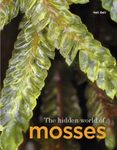Flora / Fauna Identification Key Monograph
By: Dierk Michaelis(Author)
435 pages, 219 plates with b/w photos and b/w line drawings, 15 b/w photos and b/w illustrations, 4 tables
![The Sphagnum Species of the World The Sphagnum Species of the World]()
Click to have a closer look
About this book
Contents
Customer reviews
Related titles
Recommended titles
About this book
Sphagnum specialist Dierk Michaelis documents the worldwide known peat moss species (genus Sphagnum) and presents keys for their identification. It represents the updated, supplemented English language version of the author's original peat moss flora of 2011 (in German), the first overall presentation of Sphagnum since Carl Warnstorf's Sphagnologia Universalis of 1911. Compared to the German edition, 12 species have been added, 23 new plates were added, the chapters on phylogeny and research history have been revised and a new chapter on Sphagnum ecology has been added.
Since Warnstorf's comprehensive work, numerous names have been recognized and revised as synonyms – particularly by Andrews, Eddy and Isoviita. These revisions, and the approximately 150 new species described since then, have been incorporated into The Sphagnum Species of the World, as well as the results of the author's own studies. Genetic characteristics were used to define the species of problematic groups. The peat mosses are of key ecological and economic importance among the mosses. They populate almost all continents with a clear focus on northern South America, North America, East and North Asia and Europe.
The genus Sphagnum is very isolated within the Bryopsida, similarities in the construction of the sporophyte indicate a distant relation to the rockmosses (class Andreaeopsida). For the internal classification of Sphagnum there are very different approaches with up to 4 subgenera and up to 18 possible sections, of which 14 are distinguished in The Sphagnum Species of the World.
Peat mosses in the narrow sense (genus Sphagnum) feature a combination of leaf dimorphism (stem and branch leaves), cell dimorphism (living chlorophyll and empty hyaline cells) and branch dimorphism (strongly assimilating spreading branches and hanging branches serving the outer water supply) that is unique among mosses. Although the assignment of any peat moss to the genus Sphagnum usually does not cause any problems, the determination down to the species level causes difficulties sometimes.
The author introduces and describes the anatomy and morphology of Sphagnum, and explains the reproductive biology, the research history and phylogenesis of peat mosses. The systematic part is divided into three segments:
- Description and identification of the sections, keys for all peat moss species, separated by continents, as well as Sphagnum species lists for 20 phytogeographic regions of the world.
- The keys for Africa, Europe and North America are based on existing data and were revised and supplemented with the help of recent descriptions, updated species concepts and new floristic data.
- Completely new keys have been developed for South America and Asia, as these did not exist previously.
A total of 292 peat moss species are described in detail, supplemented by data on habitats, geographical distribution and lists of synonyms. This section is supplemented by the presentation of the inner and outer characteristics on 219 plates. A very extensive bibliography rounds off The Sphagnum Species of the World.
Contents
Preface 3
Abstract 5
1. Introduction 7
1.1. External and internal morphology of peat mosses 7
1.2. Reproductive biology of peat mosses 10
1.3. Research history 11
1.4. Evolutionary history 16
1.5. Ecology of the peat mosses 21
1.6. Notes on identification 23
2. Characteristic and key to sections 27
2.1. Key to sections 27
2.2. Short characteristic of sections 28
3. Identification keys and regional species lists 33
3.1. Identification keys 33
3.1.1. Europe 33
3.1.2. Asia 37
3.1.3. Africa 43
3.1.4. North and Central America 46
3.1.5. South America 54
3.1.6. Australia, New Zealand and Pacific 65
3.2. Regional species lists 66
3.2.1. Europe 66
3.2.2. North Asia 66
3.2.3. East Asia incl. Japan 67
3.2.4. South Asia 67
3.2.5. South-eastern Asia incl. New Guinea 67
3.2.6. West Asia 68
3.2.7. North Africa (Continent excl. the Azores) 68
3.2.8. Central Africa 68
3.2.9. South Africa 68
3.2.10. Madagascar 68
3.2.11 The Azores 68
3.2.12. North America 68
3.2.13. Central America continent 69
3.2.14. Central America Antilles 69
3.2.15. Northwestern South America 69
3.2.16. Eastern South America 70
3.2.17. Temperate South America 70
3.2.18. Australia 71
3.2.19. New Zealand 71
3.2.20. Pacific 71
4. Species descriptions 73
4.1. Sphagnum sect. Acocosphagnum 73
4.2. Sphagnum sect. Inretorta 73
4.3. Sphagnum sect. Sphagnum 74
4.4. Sphagnum sect. Rigida 89
4.5. Sphagnum sect. Insulosa 91
4.6. Sphagnum sect. Acutifolia 132
4.7. Sphagnum sect. Squarrosa 156
4.8. Sphagnum sect. Polyclada 157
4.9. Sphagnum sect. Acrosphagnum 207
4.10. Sphagnum sect. Subsecunda 211
4.11. Sphagnum sect. Isocladus 244
4.12. Sphagnum sect. Hemitheca 331
4.13. Sphagnum sect. Cuspidata 332
4.14. Sphagnum sect. Mollusca 252
4.15. Ambuchanania 353
5. Glossarium 399
6. References 401
7. List of journals and monograph series 417
8. Illustration credits 421
9. Index 425
Customer Reviews











![Die Sphagnum-Arten der Welt [The Sphagnum Species of the World] Die Sphagnum-Arten der Welt [The Sphagnum Species of the World]](http://mediacdn.nhbs.com/jackets/jackets_resizer/19/195030.jpg)






![Die Gattung Calceolaria (Scrophulariaceae) in Chile [The genus Calceolaria (Scrophulariaceae) in Chile]](http://mediacdn.nhbs.com/jackets/jackets_resizer_medium/20/201839.jpg?height=150&width=109)























